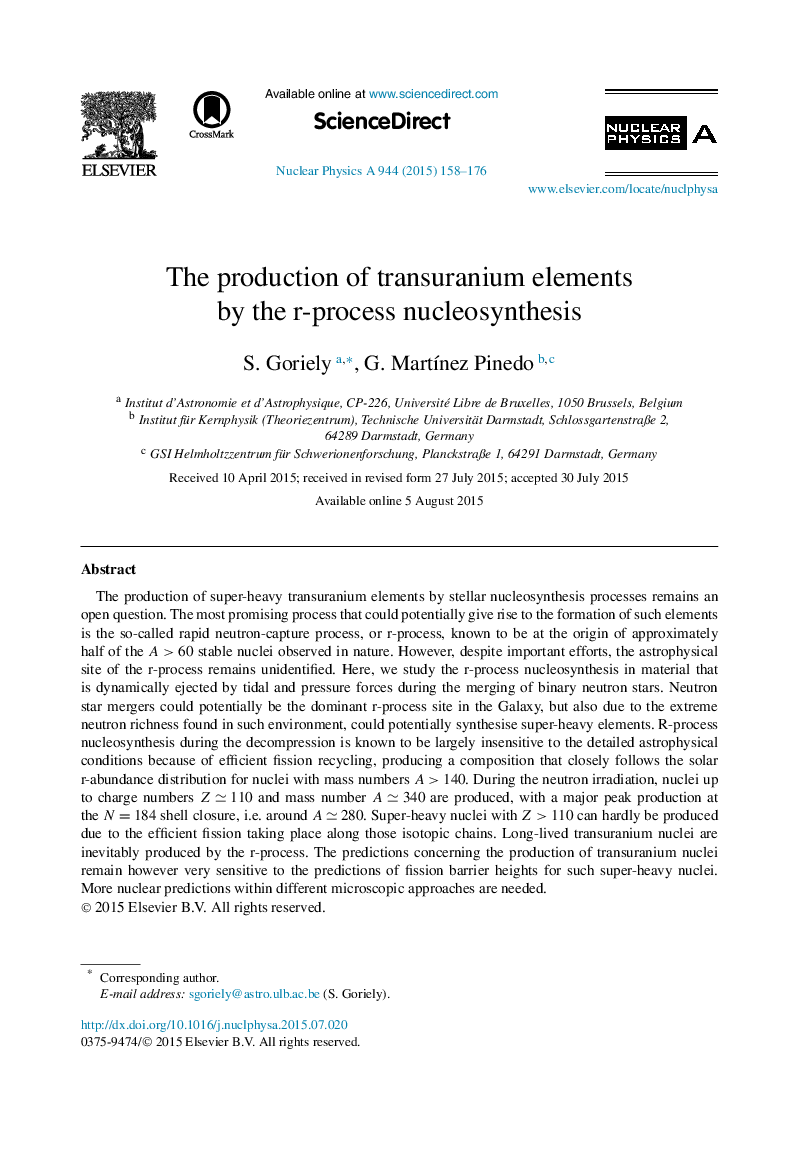| Article ID | Journal | Published Year | Pages | File Type |
|---|---|---|---|---|
| 8182980 | Nuclear Physics A | 2015 | 19 Pages |
Abstract
The production of super-heavy transuranium elements by stellar nucleosynthesis processes remains an open question. The most promising process that could potentially give rise to the formation of such elements is the so-called rapid neutron-capture process, or r-process, known to be at the origin of approximately half of the A>60 stable nuclei observed in nature. However, despite important efforts, the astrophysical site of the r-process remains unidentified. Here, we study the r-process nucleosynthesis in material that is dynamically ejected by tidal and pressure forces during the merging of binary neutron stars. Neutron star mergers could potentially be the dominant r-process site in the Galaxy, but also due to the extreme neutron richness found in such environment, could potentially synthesise super-heavy elements. R-process nucleosynthesis during the decompression is known to be largely insensitive to the detailed astrophysical conditions because of efficient fission recycling, producing a composition that closely follows the solar r-abundance distribution for nuclei with mass numbers A>140. During the neutron irradiation, nuclei up to charge numbers Zâ110 and mass number Aâ340 are produced, with a major peak production at the N=184 shell closure, i.e. around Aâ280. Super-heavy nuclei with Z>110 can hardly be produced due to the efficient fission taking place along those isotopic chains. Long-lived transuranium nuclei are inevitably produced by the r-process. The predictions concerning the production of transuranium nuclei remain however very sensitive to the predictions of fission barrier heights for such super-heavy nuclei. More nuclear predictions within different microscopic approaches are needed.
Keywords
Related Topics
Physical Sciences and Engineering
Physics and Astronomy
Nuclear and High Energy Physics
Authors
S. Goriely, G. MartÃnez Pinedo,
